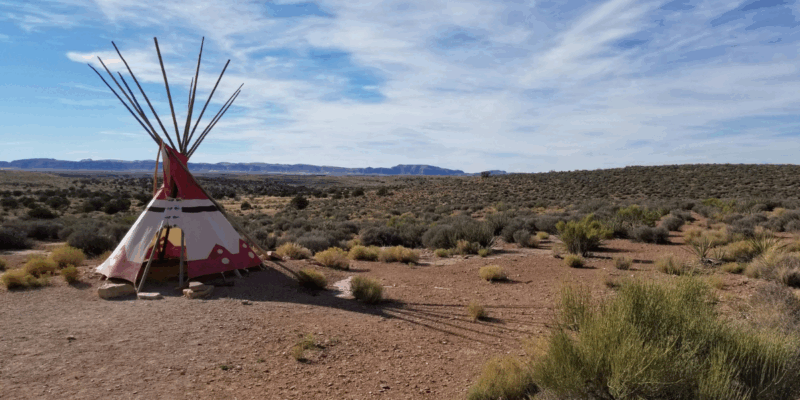In Arizona, young Indigenous artists are using their traditional craft of beading as a means of achieving economic independence as well as cultural preservation. A new generation is revitalizing ancient beadwork methods from Hopi communities to Navajo Nation while creating sustainable microbusinesses through local markets and media outlets.
Beadwork has been an integral part of Native American culture for generations, according to archeological data. Beads, which were first used as money in intertribal commerce, developed into elaborate ornaments that were used to embellish anything from complicated storytelling necklaces to buffalo skin belts. Native American beadwork, in contrast to static European art styles, reflected the tribal lifestyle, useful beauty that traveled with families, and the ability to decorate commonplace objects, tents, horse equipment, and clothes.
Archeological evidence shows that beadwork has long been an essential component of Native American civilization. Originally used as currency in intertribal trade, beads evolved into intricate decorations that were used for embellishing everything from belts made of buffalo leather to complex necklaces used for storytelling. Unlike static European art forms, Native American beadwork reflected the tribal way of life, the practical beauty that accompanied families on their travels, and the capacity to adorn everyday items, tents, clothing, and horse equipment.
In areas where traditional job options are still scarce this revival signifies economic empowerment in addition to artistic expression. While remaining true to their cultural roots, young artists are using social media and e-commerce channels to reach international markets.
The movement also serves as resistance against mass-produced "Native-inspired" goods that flood retail markets. Authentic Indigenous beadwork offers consumers a direct connection to living culture while supporting Native artisans.
The Heard Museum, which houses over 45,000 objects documenting Native American culture, emphasizes the ongoing vitality of Indigenous arts. Their collection spans from prehistoric ceramics to contemporary fine art, highlighting how traditional techniques continue evolving.
As beadwork artist Marilyn Ray, a Salish and Kootenai photographer and craftsperson, expressed: "Making the art is so beautiful and you get to live off of your Mother Earth… Mother Earth has so much material, raw material that you can make beautiful art with it."
She adds, "I just express myself through my upbringing like I said our elders are very important in our culture."
While traditional ceramics or well-known Native artisans are frequently featured in mainstream media, the silent revolution in beadwork goes mostly unrecognized. Indigenous communities' economic coverage usually focuses on land rights issues or casino businesses, ignoring grassroots entrepreneurship that is actually bringing about change at the individual and family levels.
This absence is a missed opportunity to learn how economic growth and cultural preservation can coexist to build sustainable futures that respect the past while utilizing modern resources and marketplaces.
The resurgence of beading coincides with Arizona's increased acknowledgement of Indigenous culture and rights. In a recent show of increasing respect for tribal sovereignty, Governor Katie Hobbs consented to display 22 tribal flags at the state capitol following their removal from the Phoenix VA hospital. Hobbs also signed "Emily's Law," which addressed a serious public safety issue for Native communities by establishing the state-funded Turquoise Alert system to assist in finding missing Indigenous individuals.
"Every year, tens of thousands of people go missing who fall outside the criteria for an AMBER or Silver Alert," Governor Hobbs noted when signing the legislation named after Emily Pike.
"Today, I signed Emily's Law codifying a new Turquoise Alert that will help law enforcement act more quickly and prevent these senseless deaths from happening."
Growing awareness of Indigenous issues is reflected in these policy improvements, which have improved the climate for cultural and commercial endeavors such as the resurrection of beading.
The resurgence of Indigenous beadwork serves as an example of how traditional crafts can remain culturally authentic while adjusting to contemporary economic conditions. These artists are not just conserving heritage but also contributing to the continuous narrative of Native American ingenuity and tenacity in the larger framework of greater acknowledgment and support for Native communities.













